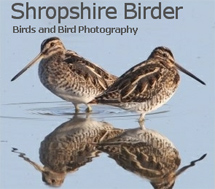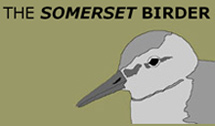Weekly round-up: 30 Apr - 6 May 2014
Aided by some obliging winds from all the right vectors, spring carried on with a vengeance this week, with an intoxicating blend of lingering megas and some quality new arrivals – rarities, scarcities, and the floodgates finally broken with skua passage in the English Channel. It was like a big, refreshing May Bank Holiday cocktail. But with rare birds, and no daft paper umbrella stuck in it.
As Mark Golley said last week, the portents were all there in the closing days of April for a good fall of birds on Fair Isle, and as we know the birding gods duly obliged with not one but two mega birds of the highest order. Cretzschmar’s Bunting and Caspian Stonechat... a male of either one of those would have been superb, but for both to be found together, on the same day, and within a mile of one another... ah, that’s the magic of Fair Isle for you.
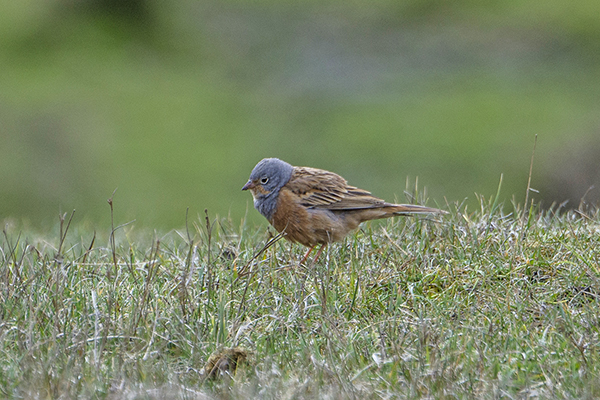
Better yet, after some early jitters when the bunting vanished straight after the Observatory’s ex-warden Deryk Shaw had found it, both it and the stonechat were to stick around long enough to make themselves obligingly available for anyone with the inclination, the time and the readies to make the pilgrimage north. Several charter planes made it into Fair Isle before the Cretzschmar’s Bunting finally moved on, being last seen on the island on 2nd. The Caspian Stonechat meanwhile was made of sterner stuff and remained until 6th. And all of this was during a purple patch for the island with two Subalpine Warblers of Eastern and Western hues, and a strong supporting cast of scarcities including the likes of multiple Short-toed Larks. It’s been said before, but it’s an incredible place.
(For those for whom a day-trip to Fair Isle remains an unattainable fantasy, no matter how rare the bird in question may be, the following tidbit may help to sugar the pill. Yours truly was, despite passing daily the Tingwall airstrip from which the regular local flights to Fair Isle depart, due to work commitments completely stymied and unable to make the 25 minute flight to bunting and stonechat heaven. They might as well have been on Scilly, or the moon, for all the good they did me). Moping aside, I’ve enjoyed the photos and video that’ve come out of the island no end... What stupendous birds these are!
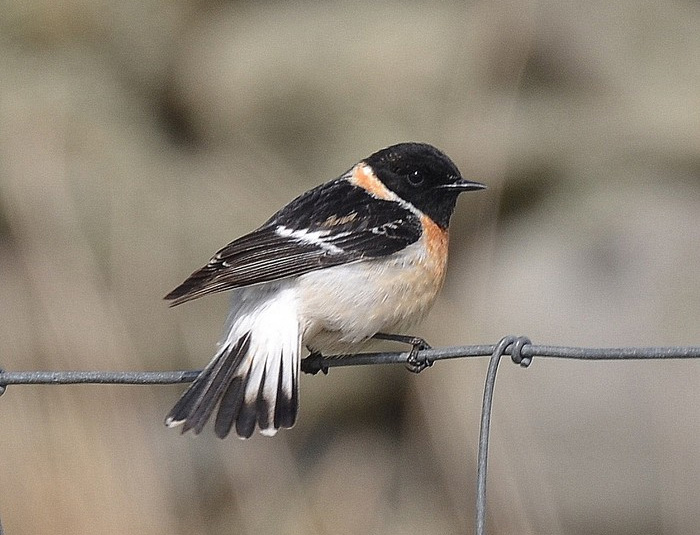
And there’s plenty of time yet this spring for something else of a similar calibre to come wafting our way.
Back in the day, American Buff-bellied Pipit was properly, eye-wateringly rare. Whilst far from the most colourful of passerine offerings from North America, its rarity alone ensured its popularity. The first record (on St Kilda in 1910) was followed by a 41 year wait for the second, in Co.Wexford in 1951. By the time a wandering bird did the rounds of St Agnes, St Mary’s and Tresco on Scilly in 1996 the species was averaging rather less than one a decade – the 1996 bird was Britain and Ireland’s 6th record. And then, starting with a wintering bird found at Wyberton in Lincolnshire in late 2005, things started to go a little Red-flanked Bluetail...
That Lincolnshire individual held station into the early days of 2006, but it was 2007 when the floodgates opened; with no fewer than 13 individuals logged in Britain and Ireland during the autumn and early winter. While the species has failed to scale those dizzy heights subsequently, it’s been recorded annually ever since, but always in the back end of the year. Until now.
The discovery of an American Buff-bellied Pipit in Lancashire at Cockersand on Sunday 4th represents Britain’s first spring record of the species, and, by default, it’s the first summer-plumaged individual to grace our shores. Subtle, yes, but a beautiful bird for all that. Whilst surely not on most birders’ rarity-radars at this time of year, perhaps with the species’ increasing autumn frequency it’s one we can now dare to hope for at this time of year.
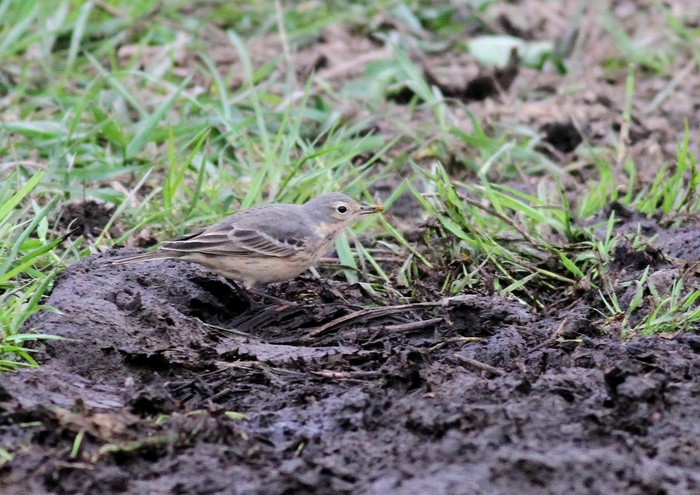
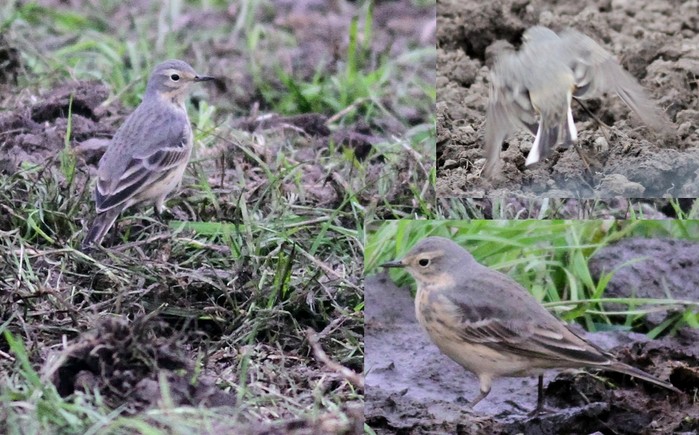
As if one American passerine wasn’t enough, Orkney’s North Ronaldsay served up a cracking spring Myrtle Warbler on the afternoon of 6th. What the aforementioned pipit might lack in colourful pizzazz this little stunner more than makes up for. Of course, British birders have already been treated to one of these gorgeous warblers already this year, having had ample chance to connect with the wintering bird in High Shincliffe (Co.Durham) back in February. Dwelling on the fact that this isn’t even a new bird for the year would be utterly churlish though – this is a superb species whenever and wherever one’s fortunate enough to see it, and when better than in fresh plumage and where better than on an island that is sometimes rather overshadowed by its illustrious neighbour on the near horizon?
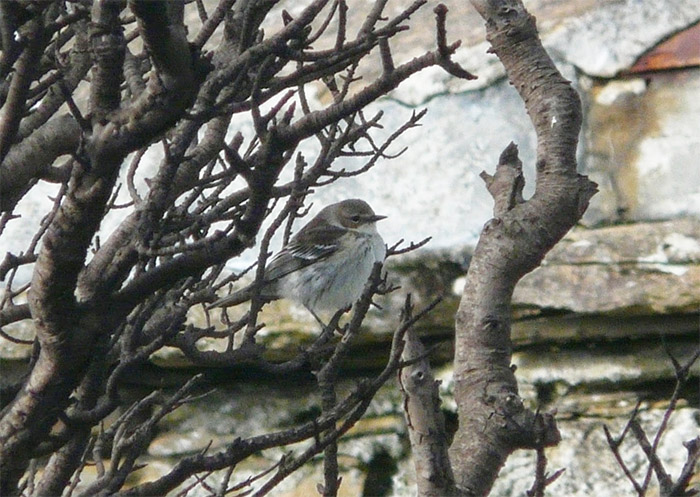
There were only 17 records accepted for Britain up until the end of 2012, and this represents the second for North Ronaldsay after Orkney’s first was discovered there in October 1995. Since then there’s been one more in the archipelago. Whichever way you paint this, it’s a properly rare bird. May records from islands are not without precedent, however, and males were recorded in this month on Fair Isle in 1977 and the Calf of Man in 1985. It’s certainly been a while since the last May bird. And with this, and the pipit, and it only being the 7th today, one wonders if there’s another American passerine or two in the pipeline for us yet…
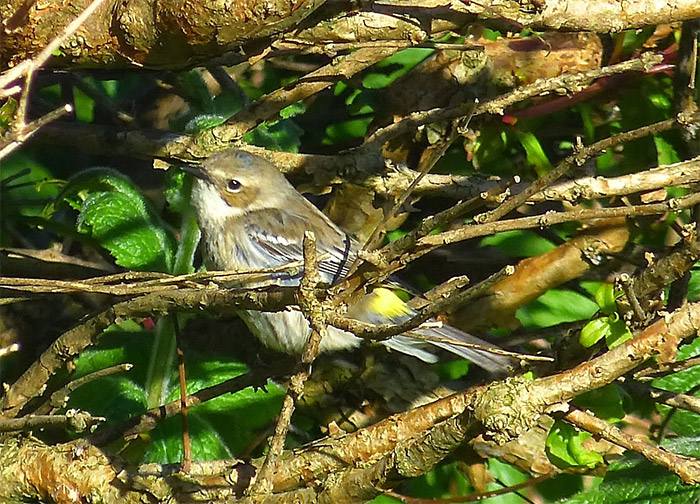
After a teasing, flirting appearance on 24th, Cornwall’s 9th (and Britain’s third of the spring) Great Spotted Cuckoo popped back out of the woodwork at Kynance Cove on 3rd-5th, to the delight of locals and Bank Holiday weekend birders alike. Three records in one year has only happened twice before, in 1979 and 1982, but we need one more this year to match the record of four attained in both 1990 and 2009. Alas the species is a classic April overshoot and records fall precipitously away in May, so we’re not holding our breath on any records being broken in 2014.
(Apart from the tenuous link of their shared prefixes, I am betting these two species haven’t been mentioned in the same breath here in the august columns of the RBA Rarity Round-Up before. But who am I to spurn such an obvious segue? So...)
Other Continental overshoots from the past week just about scraped into this week’s news with both the cracking male Collared Flycatcher on St. Abb’s Head (Borders) and the Collared Pratincole at Devon’s Northam still being present on 30th, but not thereafter. There have been a few of both species available for the birding masses in recent years, but the latter inevitably leads the mind to wander and consider the possibility of another Black-winged or Oriental... An accessible and obliging one of either would, I suspect, go down an absolute storm.
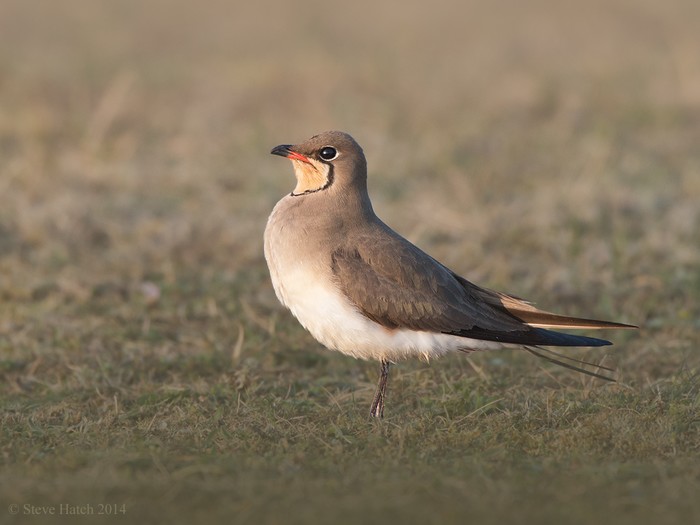
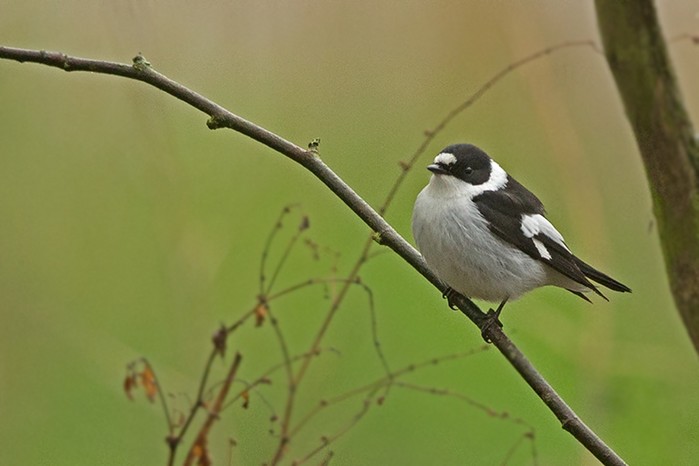
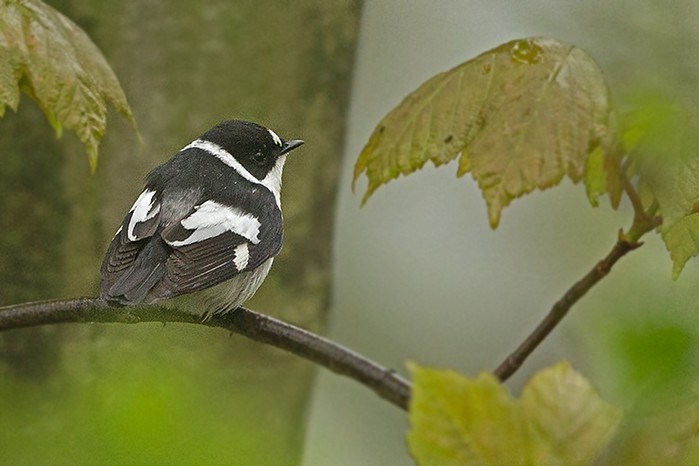
And finally... in Cambridgeshire the drake Baikal Teal continued to do itself absolutely no favours whatsoever by remaining on the Ouse Washes, near Pymoor until 3rd at least.
It’s understandable, of course. Were I a rare duck a long way from my species’ usual wintering grounds, I think I’d probably find the Ouse Washes thoroughly to my liking too. That said, were I a wild rare duck a long way from my species’ breeding grounds, I’d probably be giving some serious consideration to a bit of onward migration. Just sayin’...
With no further ado, we dive straight into the seabirds, and where better to start than with the sight of fabulous, summer-plumaged White-billed Divers? In Aberdeenshire, the waters off Portsoy continued to deliver the goods all week long, with numbers returned varying from a mere one bird on 30th and 5th through to a magnificent minimum of 14 offshore on 3rd; the same day on which four birds were seen from land off Garron Point in Aberdeenshire. Elsewhere off mainland Scotland a single bird was off Portknockie (Moray/Nairn) on 4th, and three birds were seen in the same location the following day. Finally, Orkney laid claim to two birds on 5th, off Burray and South Ronaldsay respectively.
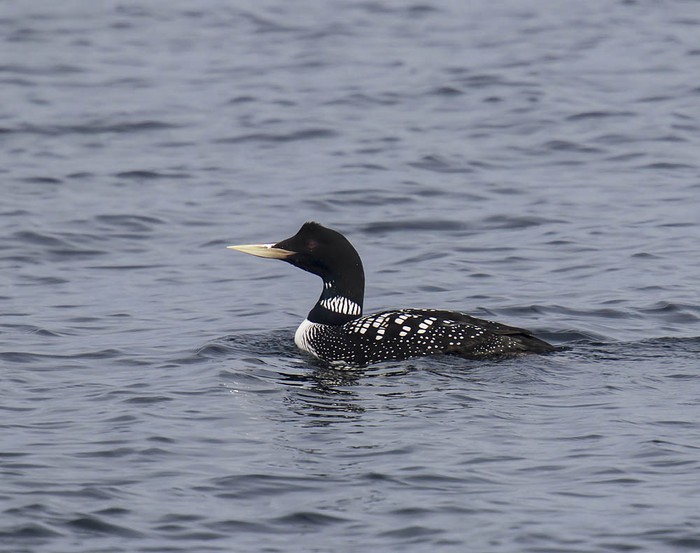
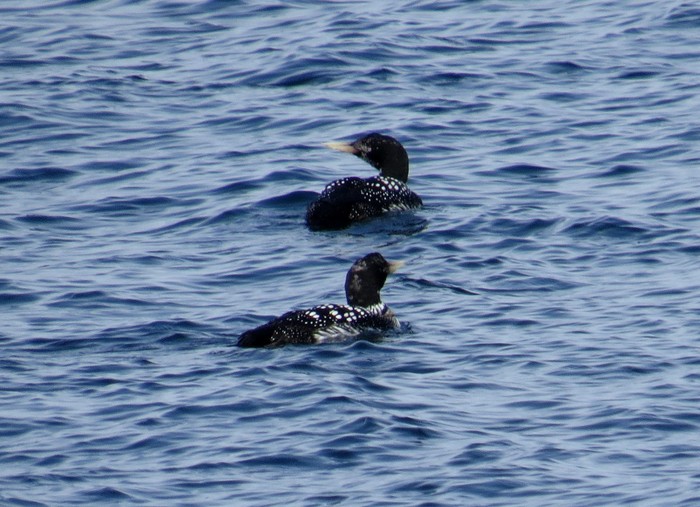
Sporadic reports of handfuls of Pomarine Skuas throughout the week came to a grand total of 36 birds by 4th, the maximum flock being 10 birds past Bowness-on-Solway (Cumbria) on 4th. On the 5th however all hell broke loose in the English Channel, and the skuas started to move east in good numbers all along the south coast from Devon to Kent. By the end of the day counts into three figures had come from Dungeness (Kent) with 103 birds; Birling Gap (East Sussex) with 117 birds; and Splash Point (East Sussex) with 130 birds. These were just the grandstand figures – birds were noted from practically every promontory (and not a few bays too) along the Devon-Kent line. Spring had finally sprung.

The superb and confiding adult Night Heron remained faithful to it’s favourite hunting channel at the margins of the Loch of Spiggie (Shetland) until 30th, but was not seen thereafter.
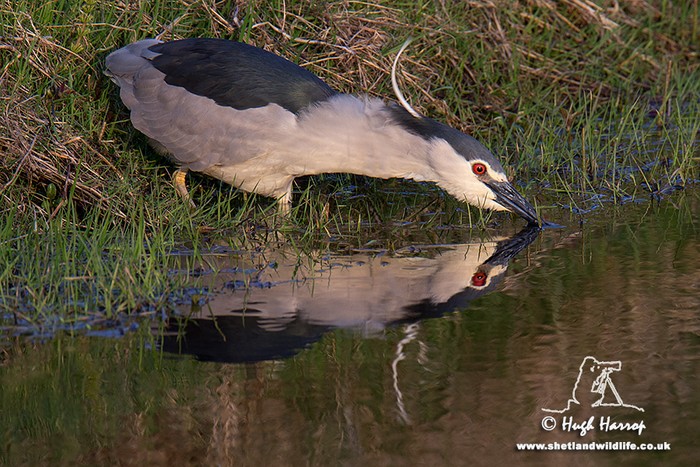
Two Purple Herons were recorded this week, singles at Kenfig NNR (Glamorgan) on 30th, and at Dungeness RSPB (Kent) on 2nd.
Moving south down the country, Orkney held onto its Glossy Ibis on North Ronaldsay until 6th, though this was to be the only representative of the species in Scotland for the week. In the north of England an individual was noted in South Yorkshire at Orgreave Lagoons in the early morning of 3rd; thereafter, one was seen at various points in Dearne Valley on 3rd-5th. Over in Lancashire a bird seen initially at Sunderland Point on 2nd was on the Conder Estuary from 4th-6th, and in Derbyshire a bird was seen at Carr Vale NR on 3rd.
The bird remained at Wanlip Meadows (Leicestershire) from 30th-3rd, whilst further individuals were seen on 5th at Summer Leys (Northamptonshire) and Marston Vale Millenium CP (Berkshire). East Anglia’s sole representative was a bird still at Hickling Broad from 30th-3rd. In the south-east, Kent continued to prove attractive to the species with two birds at Dungeness on 3rd, one remaining there on 4th. Two birds remained faithful to Lidsey (West Sussex) from 30th-4th.
.jpg)
The south-west accounted for a lingering bird at Gillan Creek in Cornwall on 30th-1st; and elsewhere in the county one at Par Beach on 30th. Later in the week one was noted on Tresco (Scilly) on 3rd. Further up-country one was seen again at Weston-super-mare in Somerset on 4th, and two birds stopped briefly at Coward’s Marsh (Dorset) on the afternoon of 6th. Wales’ sole record was one at the National Wetlands Centre in Carmarthen on 4th-5th. Meanwhile, in Ireland two birds were recorded during the period: at Grangebellew (Co.Louth) on 3rd, and Lough Cowey (Co.Down) on 4th.
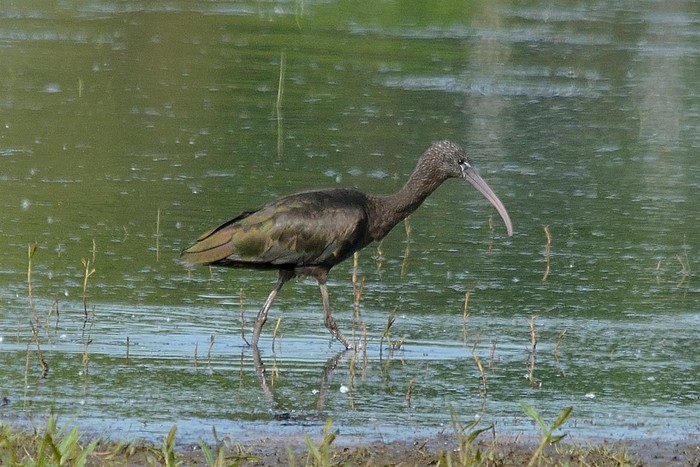
Elswehere in Ireland, Tacumshin (Co.Wexford) held firm to its two Cattle Egrets this week, with both birds still present on 6th. Heading back across the water, the long-staying bird was still in Buckinghamshire at Calvert Lakes on 2nd-3rd, where it found the tern rafts much to its liking, and in fields at Steeple Claydon on 5th-6th. In Cambridgeshire one remained at Oxlode from 30th-6th. A new individual was noted in Somerset in fields at Wall Common on 6th.

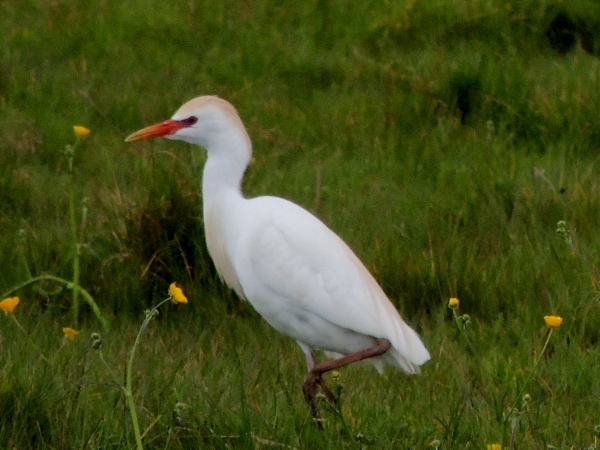
Some 25 Great White Egrets were scattered around the country this week, the most notable sighting involving five birds seen coming in off the sea at Dungeness (Kent) on 3rd. Two birds were at Widewater Lagoon (West Sussex) on 1st. That same day, two birds were seen flying through Beddington sewage farm (London), and were later relocated at Rainham Marshes. Single birds were noted at West Thurrock (Essex) on 2nd; at Carlton Marshes (Suffolk) on 3rd-4th; and at Holland Haven CP (Essex) and Lowestoft (Suffolk) on 4th.
A handful of records came this week from Lincolnshire, with single birds noted at Burgh-le-Marsh on 2nd, Far Ings NR on 3rd, and Gibralter Point on 4th. Two birds were at Cowpen Marsh (Cleveland) on 1st, while single birds were at Druridge Pools (Northumberland) on 1st-6th, in Cheshire at Hale and Woolston Eyes NR on 3rd, and in Wales at Lake Vyrwny (Powys) on 6th. Back on the south coast single birds were noted at Bembridge Ponds (Isle of Wight) on 1st, and Marazion (Cornwall) on 4th.
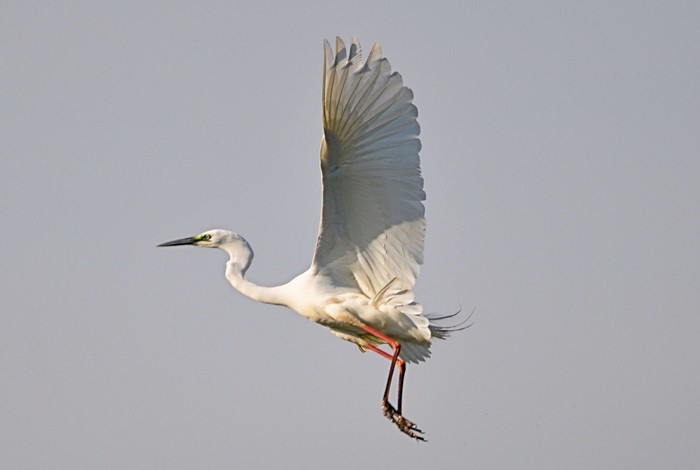
Spoonbills continued to be widely reported this week, from 16 counties in all, and none more so than Norfolk where reports surfaced daily of ones and twos at various points along the north coast, and a peak count of five birds came from Breydon Water on 3rd. Outside of Norfolk, further multiples included two birds at Frampton (Lincolnshire), and the week’s peak count of 10 from Middlebere (Dorset), both on 5th. In Ireland, the lingering bird remained at Castle Espie (Co.Down) until 4th.
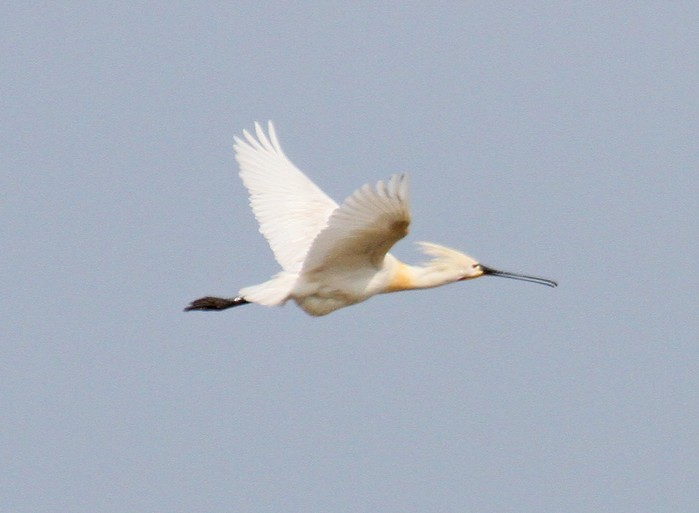
Norfolk, unsurprisingly, bossed reports of Common Cranes during the week with a single flyover at Titchwell on 5th and two birds at Welney on 6th completely dwarfed by a flock of nine birds tracked over Walsey Hills and Blakeney Harbour on 3rd. Other multiples were six birds over Southwold, Eastbridge and Dingle Marshes (Suffolk) on 6th, four birds over Llanishen Reservoir (Glamorgan) on 3rd, two birds over Aqualate Park (Staffordshire) on 4th, and two birds briefly at Howden (East Yorkshire) on 5th.
Other Crane reports related to singletons: at Lidsey (West Sussex) still on 30th; in the Quendale area of Shetland’s south mainland from 30th-6th; over Beal (Northumberland) and Saltholme RSPB (Cleveland) on 1st; over Eastleigh (Hampshire) on 3rd; and from Bexhill (East Sussex), Lydd (Kent), Newport Wetlands (Gwent) and Seaham (Co.Durham) on 4th.

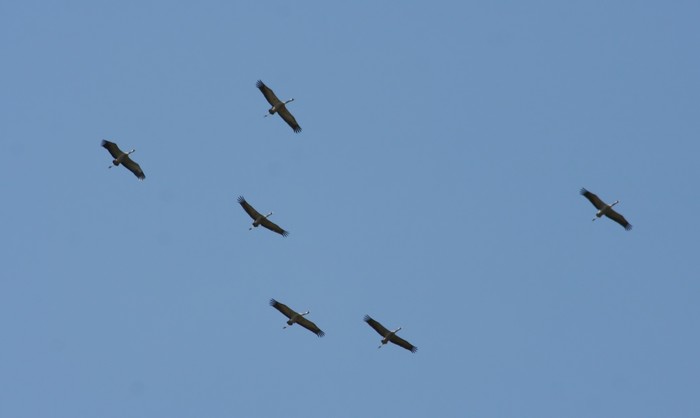
Sorting the wheat from the chaff where White Storks are concerned is always problematic, but aside from the taint appending to those birds unfortunate enough to be seen in Norfolk (step forward the bird at Buckenham Marshes RSPB on 3rd) some or all of the remaining birds seen this week must, given the supporting cast of scarcities and rarities logged this week, have origins as pure as driven snow. Singletons were noted at Swallowfield (Berkshire) on 1st-2nd, Waltham and Pulborough Brooks (West Sussex) on 2nd, and on 4th from Woodbridge (Suffolk) and Taunton (Somerset). The latter record was particularly notable for concerning not one but three birds flying over Hestercombe Gardens, a fine sight in British skies.
A Spotted Crake was logged at Red Rocks (Cheshire) on 30th, and birds singing away in the dead of night were recorded at a couple of locations this week: at Kennington (Oxfordshire) on 30th-1st, and at Grove Ferry (Kent) on 4th-5th.
When Bjork sang “It’s oh so quiet” back in the 90s she probably didn’t have Britain and Ireland’s geese and ducks in mind, but she might as well have done for the amount of rare wildfowl logged this week. It was deathly out there...
Geese... ah, what geese... so moving swiftly onto ducks, and Green-winged Teal in particular. Two of those, drakes at Stocks Reservoir (Leicestershire) still on 1st-2nd, and one at Castle Espie (Co.Down) on 5th. The female Blue-winged Teal was still in Kent at Sandwich Bay on 30th, and we all know what was still in Cambridgeshire at Pymoor on 3rd...
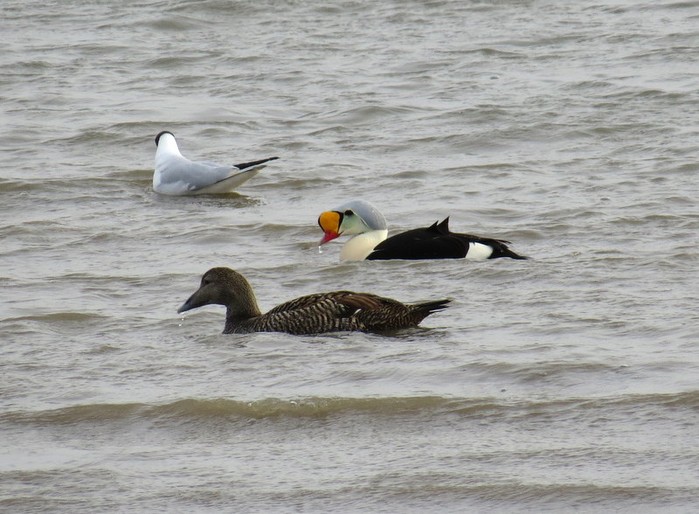
Just the one Ring-necked Duck this week, the drake that lingered in Shropshire at White Mere from 30th-6th. Much further north and the handsome drake King Eider remained happily ensconced on the Ythan Estuary (Aberdeenshire) until 5th at least. Another drake was recorded at Burghead (Moray/Nairn) on 1st.
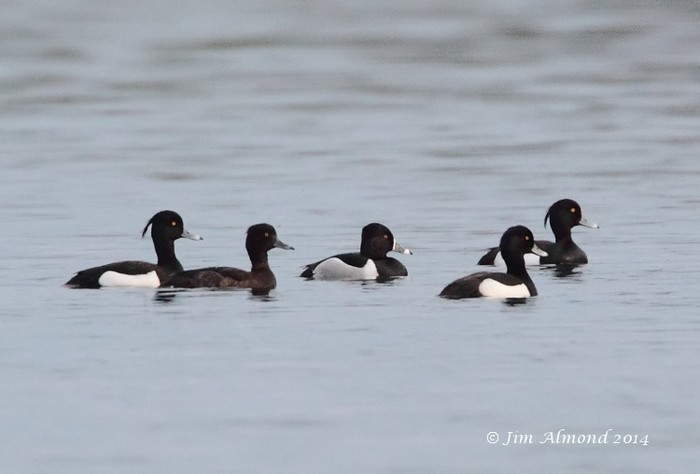
Last gasp for the ducks goes to the two Surf Scoters logged in the past seven days – an immature seen from the ferry in the Sound of Harris (Out Hebrides) on 2nd, and the drake again off Musselburgh (Lothian) on 5th-6th. So that was that for the wildfowl – not quite out for a duck, but not far off.
/surf_common_scotersc.jpg)
A good showing of waders across the country this week, with some expected and not-so-expected species in the mix. And where better to start than with a superb quartet of Americans?
Kent’s Dungeness started things off with a Long-billed Dowitcher on 1st. The following day belonged to the sandpipers, with a Spotted Sandpiper on North Ronaldsay (Orkney) and a Pectoral Sandpiper in Londonderry at Lough Beg. A further Pectoral was at Loch of Kinnordy RSPB (Angus/Dundee) on 5th-6th. Last but by no means least was a Lesser Yellowlegs found at College Lake in Buckinghamshire – a superb inland record, this is only the third record for the county, and the first since 1977. In a sense, this was one of the rarest birds of the week!

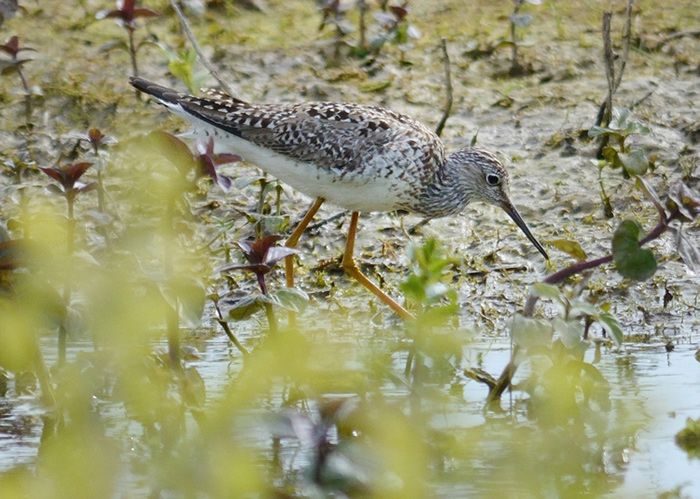
Quite where the flock of 10 Black-winged Stilts logged last week at Dungeness has moved onto is anyone’s guess, with barely a handful of records to show for this week. One was at Sandwich Bay (Kent) on 2nd; Dorset accounted for an individual on private land at Chard Junction late on 4th, and then a bird at Lodmoor on 5th. Finally on 6th, one was found further along the coast at Titchfield Haven (Hampshire) on 6th.
A female Kentish Plover was at Dawlish Warren (Devon on 2nd-3rd. Single Temminck’s Stints were noted at Wellington GPs (Herefordshire) on 4th-5th, Idle Valley NR (Nottinghamshire) on 5th, and Drayton Bassett Pits (Staffordshire) and Trimley Marshes (Suffolk) on 6th.
50 Dotterels were recorded this week, with four females remaining at Choseley Drying Barns (Norfolk) from last week on 30th; three birds remained there on 6th. Other small trips noted on 30th were two birds in Lothian on Carnethy Hill (with one still there on 1st), three birds in Lancashire on Pendle Hill (until 5th), and four birds on Orkney mainland at Dounby. On 3rd a lone female was in Lancashire on Fair Snape Fell (less of a trip that one, and more of a stumble. I’ll fetch me coat...), and five birds were at Ingleborough (North Yorkshire). Wales dominated 4th, with a single bird on Anglesey at The Range RSPB (until 5th) and seven birds in Gwynedd at Foel Fras; the week’s biggest trip was in Lincolnshire at Tetney Lock that day, with 10 birds noted there. Single birds were recorded on 5th in Pembrokeshire at Tresinwen and in Northamptonshire at Hemington, and the week closed with a further four birds in Northumberland at the Cheviot, four birds in Lincolnshire at North Cotes Point, two birds on Scilly’s St Agnes, and a single bird on Orkney’s North Ronaldsay on 6th.
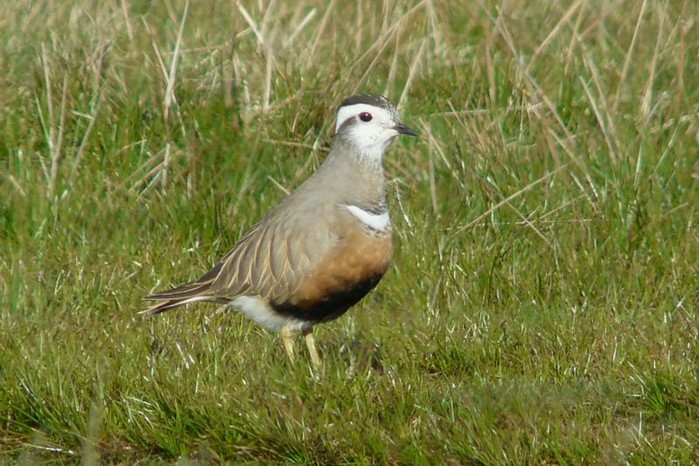
With the year gathering pace news of rare and scarce gulls was dwindling this week faster than Norwich City’s chances of avoiding relegation. Pride of place then to Bonaparte’s Gulls, with adults gracing Marsh Lane NR (West Midlands) on 1st, and Slimbridge (Gloucestershire) on 5th. These represented the first and third records of the species respectively for those areas.
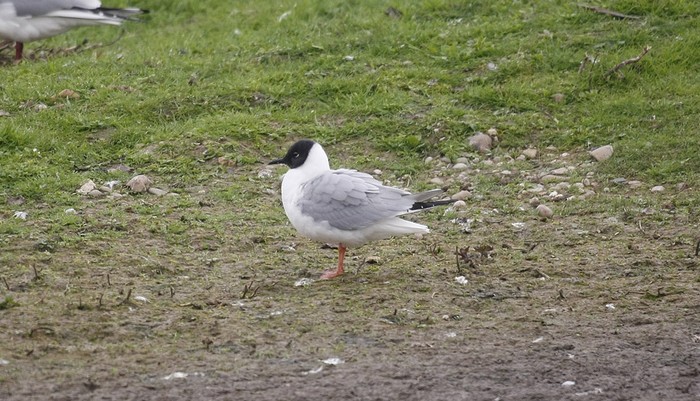
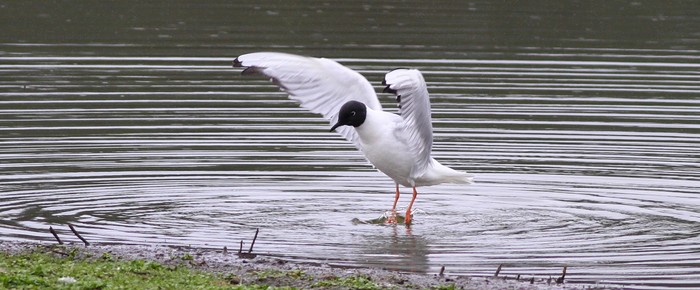
An adult Sabine’s Gull past Skinningrove (Cleveland) on the morning of 2nd would have been a fine reward for the stalwart seawatcher.
Ring-billed Gulls made a resurgence of sorts this week with a mighty three individuals recorded: a first-summer still in Co.Kerry at Blennerville on 1st, an adult on the sea off St Mary’s Island (Northumberland) on 2nd, a first-winter on Sword’s Estuary (Co.Dublin) on 5th, and a second-winter on North Uist’s Loch Sandary (Out Hebrides) on 6th. The faithful two Kumlien’s Gulls from last week stuck around a while longer, the Fair Isle (Shetland) bird being noted on 2nd, and the Littlehampton (West Sussex) bird still on 4th.
/ring_b_gull_2014c.jpg)
Numbers of Iceland Gulls dwindled to 25 birds, a predictable diminishment as winter becomes but a memory. Wales and Ireland logged two birds apiece, Scotland five, and England the balance of 16 birds. The only multiple single site count came from Minsmere (Suffolk) with an adult and a third-winter reported on 3rd.
Meanwhile numbers of Glaucous Gulls fell through the floor, down from the giddy heights of 21 last week to a mere eight this week – we’re getting into territory where these can be individually reported without wearing out yours truly’s typing finger or your patience, so here goes... An immature was on Islay at Mull of Oa (Argyll), and a juvenile in Lancashire at Teal Bay on 30th; a juvenile at Loch Spynie (Moray/Nairn) on 1st; one was in Co.Mayo on The Mullet on 2nd, and a further juvenile remained at South Huish Marsh (Devon) on 2nd-5th; the evocatively named Stinky Bay on Benbecula lured in a third-winter on 3rd; on 5th-6th a juvenile was at Claddach Kirkibost, North Uist (Out Hebrides); and a further bird was at Cemlyn Bay (Anglesey) on 5th.
/glauc_may5c.jpg)
So from the winter’s leftovers we move briskly onto the spring’s fresh servings – some more overshooting rare marsh terns. Proceedings kicked off on the afternoon of 1st with a Whiskered Tern noted in Co.Cork at Aghills Lake before flying off west. Latterly two birds were found over the weekend in England and Ireland respectively. First out of the blocks was one at Walberswick in Suffolk on Saturday 3rd, and hot on that one’s heels a second bird was discovered in Co.Cork at Lough Aderra on 4th.
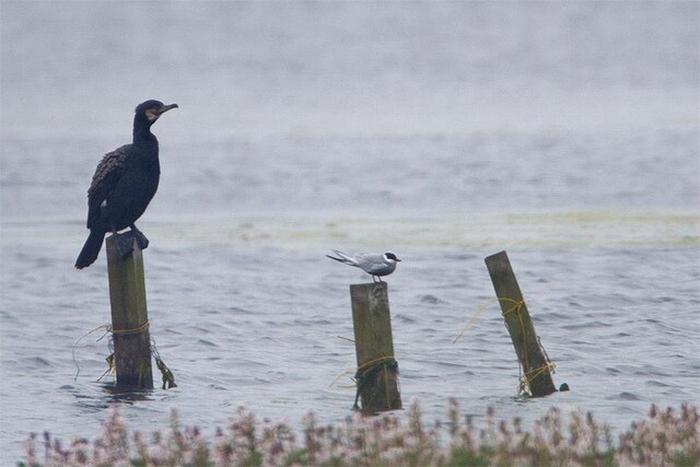
While the species has been annual since the early 90s, it’s a far rarer proposition in Ireland than it is in England – the latter’s freshwater bodies very much getting in the way of the former where the displaced Childonias is concerned. Compare Britain’s 205 records to the end of 2012 with Ireland’s more modest 21. And yet... this week’s bird at Aghills Lake is the 7th for Co.Cork, whilst the Walberswick individual is only the 6th for Suffolk. Who’d have thought? Were I a betting man I’d have assumed that Suffolk with some showpiece wetlands and a closer proximity to the Continent would have had far more previous records. Funny old thing, birding.
Reports of Black Kites soared this week, in particular in Norfolk where it seemed for a while on 4th as if the skies must be full of them… A report of one in Argyll at Lochgilphead on 3rd gave little clue of what was to come the following day in East Anglia. Confirmed birds in Suffolk at Carlton Marshes and in Norfolk at West Runton and Winterton-on-sea on 4th were bolstered by further reports in Norfolk that day from Wells-next-the-Sea, Trowse Newton, and Poringland. Just how many birds were involved?
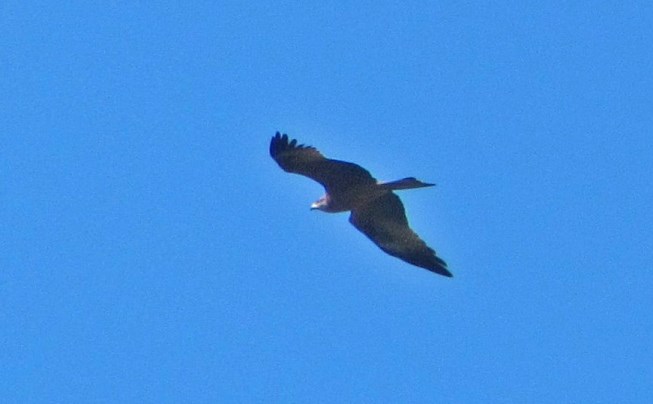
Things were somewhat clearer in the south-west, where one was seen in Cornwall at Trevilley on 4th, and one the same day on Tresco (Scilly). This latter bird was joined by a second bird (via St Martins) in the afternoon of 5th. The Cornish bird, or another one? Like I said, ‘somewhat clearer’! Both remained on 6th, and a further bird was recorded at Harborne (West Midlands) that day.
News of Montagu’s Harriers was dominated by a cracking dark morph bird in Lothian’s Lammermuir Hills on 3rd-4th. The species is rare enough as it is in the UK these days, but these exquisite dark birds are like hen’s teeth. A male was seen at Wykeham Lakes (North Yorkshire) on 4th, and single ringtails on 5th at Gibralter Point (Lincolnshire) and Breydon Water (Norfolk).
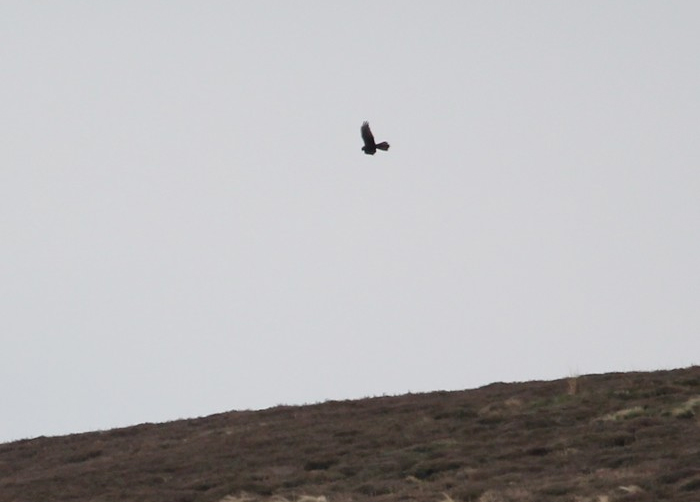
Last but by no means least, the first Red-footed Falcon of the year came through right on cue (and as predicted by Mark last week in the Rarity Round Up) on 3rd May over Portland (Dorset). What we’d all give for another invasion year of these charismatic little falcons.
Passerines of the calibre of Cretzschmar’s Bunting, Caspian Stonechat and Buff-bellied Pipit were always going to dominate the headlines this week, but for the most part these superb birds were either too far away or all too brief for most people to connect with them. But there was plenty of solace to be found, and this being May it came in all shapes and colours, and some of it was singing...
Kicking things off with the warblers, Fair Isle held onto its male Eastern Subalpine Warbler until 2nd, and mixed things up a little with a Western Subalpine Warbler from 3rd-5th in the same area that bunting was found last week. What a garden list that’s shaping up to be! Elsewhere in the archipelago a further Eastern Subalpine Warbler was on the Out Skerries on 2nd. Dorset laid claim to the week’s third Eastern from 1st-3rd. The week closed out with another Western in Norfolk at Holme on 5th-6th.
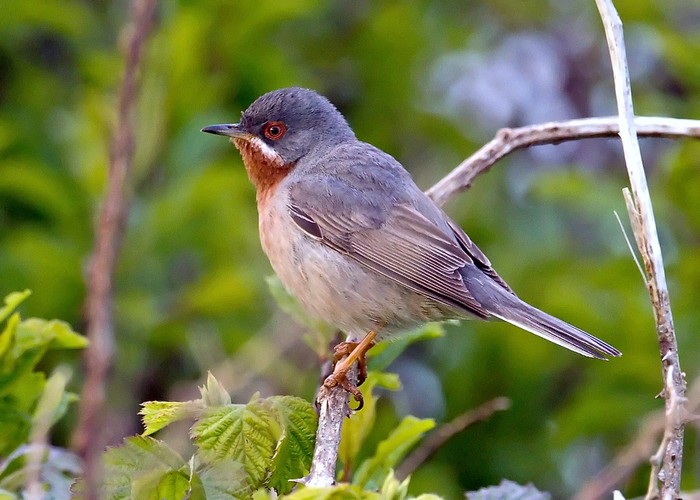

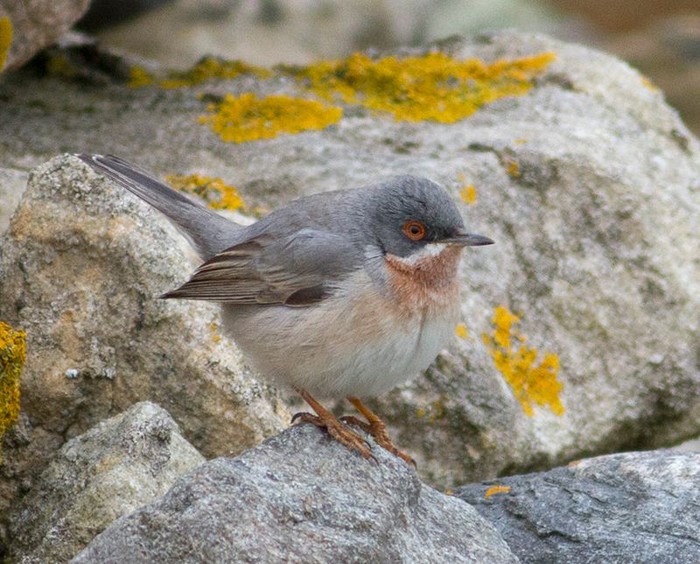
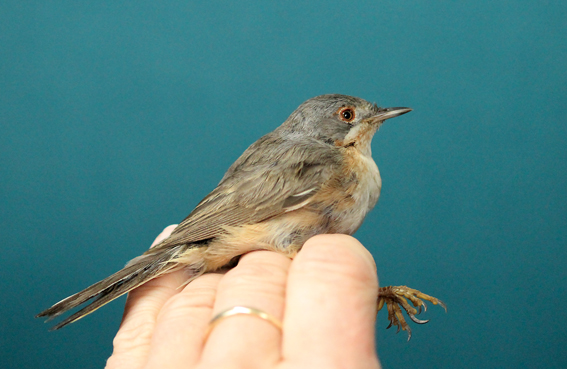
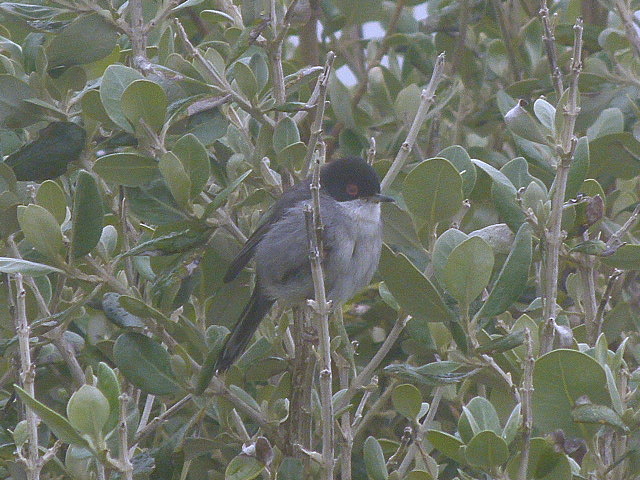
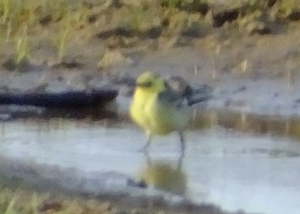
Citrine Wagtail at West Kirby, Cheshire (© Jane Turner)
The male Sardinian Warbler remained settled on Dursey Island (Co.Cork) until 6th. Meanwhile on 3rd a fine singing Western Bonelli’s Warbler was discovered in Northumberland at Newbiggin-on-sea.
Yellow-browed Warblers kicked off their week with a moribund individual in East Yorkshire at Kilnsea on 30th. In better fettle were last week’s individual at Dungeness (Kent) still present on 6th, and two new individuals, one on Unst (Shetland) on 2nd, and a singing bird at Holme (Norfolk) on 5th-6th. The latter a far sweeter sound than that of the singing Great Reed Warbler found at in Suffolk at Lackford Lakes on 5th...
As confidently predicted by Mark last week, spring Citrine Wagtails appeared in recent days, starting with a showy female in Shetland at the Pool of Virkie on 1st. Towards the end of the week a male was found in Cheshire at West Kirby on 5th.
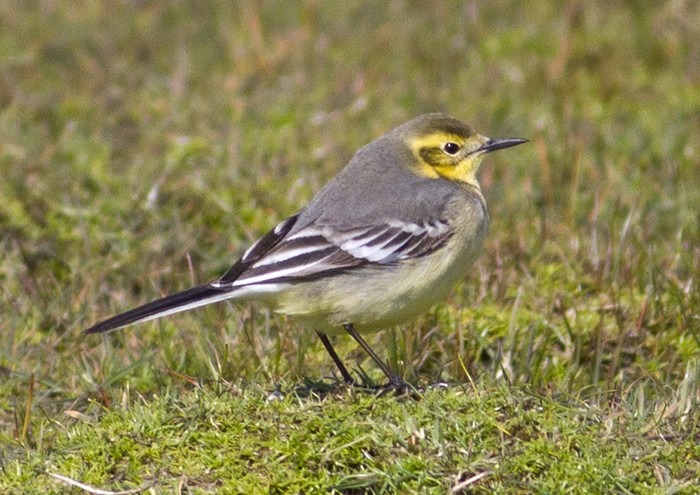
Pipits of various kinds put in a good showing, star billing of course going to Britain’s first summer-plumaged Buff-bellied, with a strong supporting cast of a Tawny Pipit on 30th at Cockersand Abbey (Lancashire) on 30th, and an Olive-backed Pipit on Unst (Shetland) on 2nd. Reports of Richard’s Pipits came from Norfolk at the week’s beginning, at Gramborough Hill on 30th and Winteron Dunes on 1st, and latterly up the length of the east coast: on Fair Isle (Shetland) on 1st; Donna Nook (Lincolnshire) on 2nd; from St Abb’s Head (Borders) and Flamborough (East Yorkshire) on 3rd; and again from Flamborough on 5th. The 5th also saw the only record of the species away from the east, a bird seen at Northwick Warth (Gloucestershire).

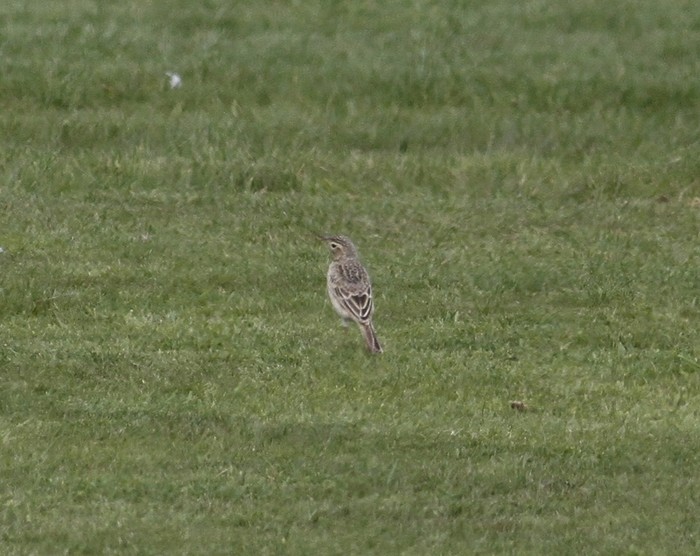
Fair Isle held onto the remnants of the three Short-toed Larks found there last week, with two still present on 2nd, and one remaining until 6th. Just a hop, skip and a jump away to the south in Orkney, North Ronaldsay logged a single bird on 5th-6th.
Fair Isle’s ability to retain birds for a day or three of recuperation and body fat restoration was amply demonstrated this week – another remnant from last week’s awesome fall came in the form of the Burkle Red-breasted Flycatcher still there until 1st . A Bluethroat and a Great Grey Shrike graced the isle from 30th-1st, the week’s only Waxwing from 2nd-6th, and Wrynecks remained omnipresent, peaking with a count of three on 1st-2nd.
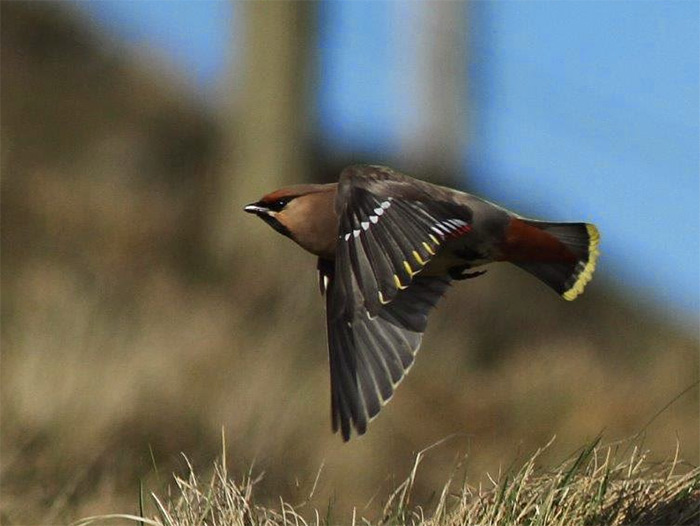
After last week’s Wryneck largesse, numbers barely made it into double figures across the country this week. Away from Fair Isle, single birds were noted at Blakeney Point (Norfolk), Holy Island (Northumberland), Burravoe, Yell (Shetland) and The Naze (Essex) on 30th; North Ronaldsay (Orkney) on 2nd; Skeffling (East Yorkshire) on 3rd; and Baltasound (Shetland) and Stromness (Orkney) on 6th.
In a poor week generally for shrikes, an adult female Woodchat Shrike at Hemscott Hill (Northumberland) on 5th-6th was well-received.
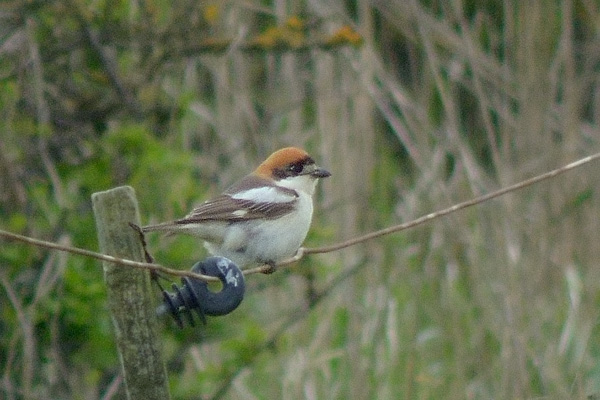
Red-rumped Swallows got May off to a flying start with three birds logged during the week – in Surrey at Tice’s Meadow on 1st, in Kent at Lade GPs on 2nd, and latterly over Spurn (East Yorkshire) on 5th. Those most glorious harbingers of spring, Golden Orioles made landfall on Scilly on 5th, with a female-type noted on St Martin’s and a male on St Mary’s on 5th; and a further bird up on Anglesey at Cemlyn Bay that day.
Giving those orioles a run for their money in terms of crowd-pleasing gaudiness, Hoopoes had another good week with 14 birds logged, including a notable pair together in Suffolk at Kessingland on 30th. The same day saw single birds noted at Winterton Dunes (Norfolk), Kilnsea (East Yorkshire), and Durlston CP and Swanage (Dorset), the latter bird remaining until May 2nd. Dorset enjoyed another bird on 2nd at Bridport, with further birds recorded that day at Countisbury (Devon) and Allonby (Cumbria). Further birds were logged on 3rd at Holmfirth (West Yorkshire); on 4th at East Wretham Heath and Thetford (Norfolk) and Kenidjack (Cornwall); and on 5th at Santon Downham (Suffolk).
As if all that technicolour loveliness wasn’t enough, a Bee-eater flew over Landguard on the morning of 6th, alas heard only.
There was a small surge of Serin records this week, with half a dozen reported. Scotland laid claim to one bird in Fife on the Isle of May on 4th. The remainder were all in England, with the south and east coasts predictably dominating proceedings. Abbotsbury (Dorset) laid claim to April’s last on 30th, with further birds at Portland (Dorset) and Newhaven (East Sussex) on 5th. Norfolk recorded a single bird at Happisburgh on 3rd, and Spurn (East Yorkshire) a flyover on 6th. A final inland report came from Croydon (London) on 1st.
May might be upon us, but those Two-barred Crossbills just will not let it lie... Three (two males, and a female) were again at Broomhead Reservoir (South Yorkshire) on 4th, with one of those males heard singing the previous day. Meanwhile down in Norfolk the two Lynford Aboretum males were still in situ until 5th at least.
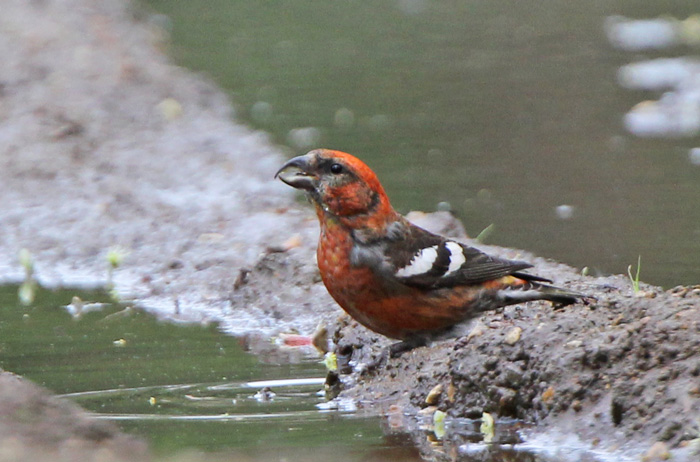
We’re now firmly into the heart of May, and things are hotting up nicely. There’s that feeling in the air now that almost anything is possible... but of course, some things remain more likely than others. None more so than Subalpine Warblers, which a glance at the past records reveals to be practically a nailed-on certainty in the coming week on the south and east coasts.
The first Red-footed Falcon of the year has already clocked in with us in Dorset this past week, and with some helpful south-easterlies more would be a good bet for the coming days; likewise a White-winged Black Tern or two hot on the heels of last week’s Whiskereds. And of course it’s now prime time for Little Bittern and some more Black-winged Stilts.
So far, so predictable. If we’re going out on a bit of a limb, where better to go than hoping for an east coast Calandra Lark? With only 17 British records on the books, almost a third of these über-larks have occurred in the coming week since 2000. Granted, of those five records four have been offshore on Scottish islands – two for Shetland, and one apiece for Orkney and the Isle of May – but the bird at Gibralter Point (Lincolnshire) on 11th May 2011 provides some grounds for modest optimism for the mainland birder.
That said, over half of Britain’s Calandras have been one day birds, and a mere three have remained for longer than two days. So the moral of the story must be that, when news breaks this coming week of a Calandra Lark on Blakeney Point during the hottest day of the year thus far, you need to move fast, and get ready to run across some heat-shimmering sand’n’shingle. You’ll thank me for this, really you will.
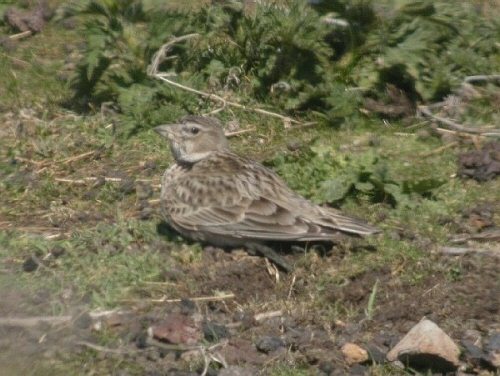
Jon Dunn
07 May 2014
Special thanks this week to Mark Warren and North Ronaldsay Bird Observatory
Contributors websites

















